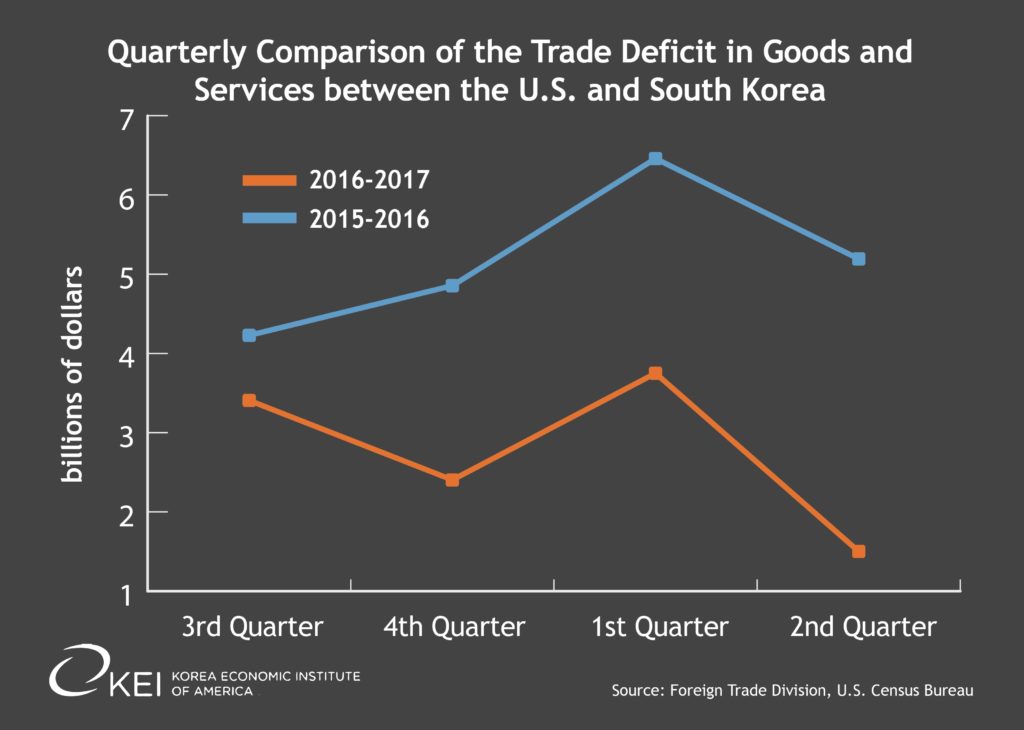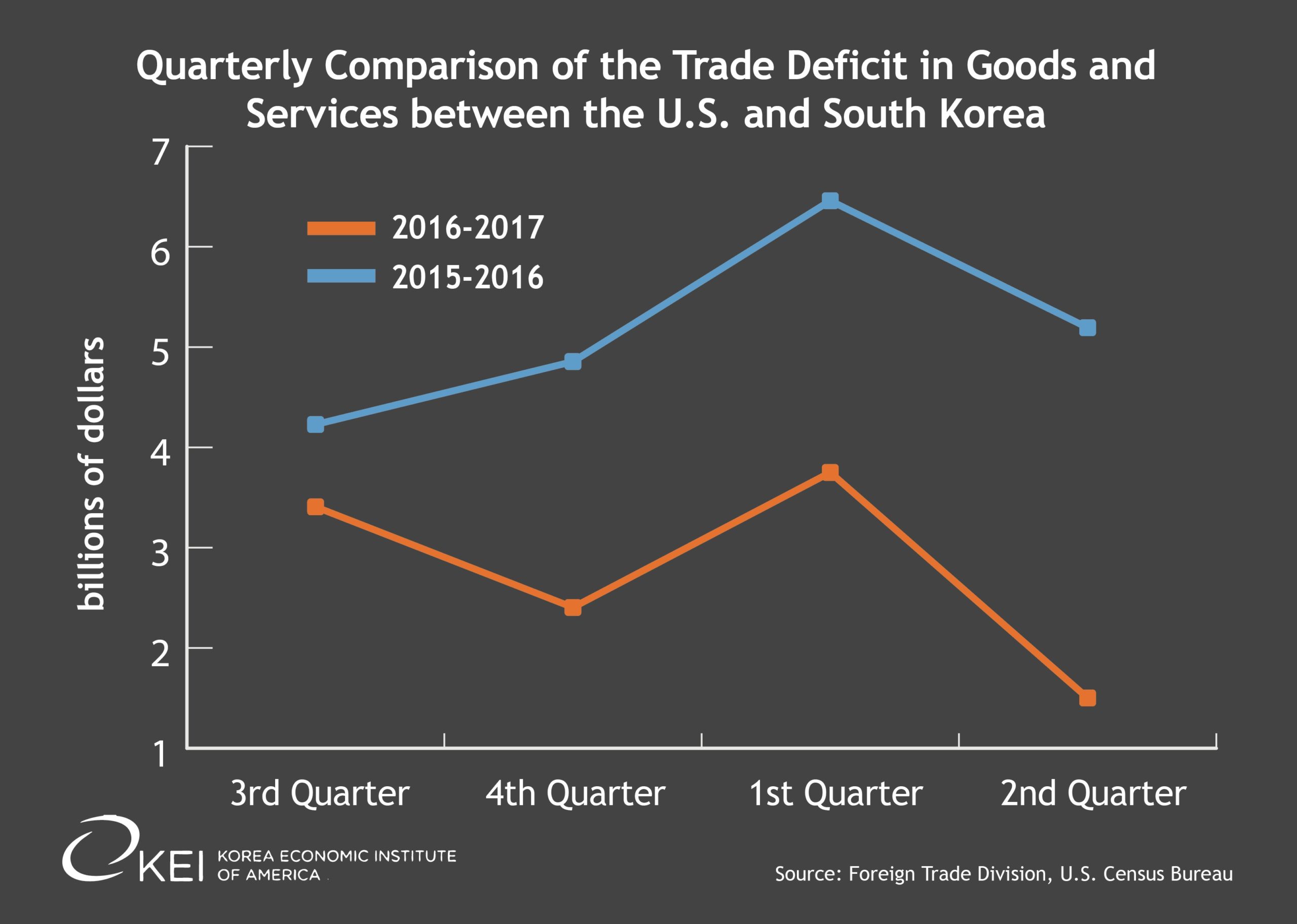The Peninsula
No Reason to Withdraw from the KORUS FTA

By Phil Eskeland
Rumors flooded Washington over the Labor Day holiday weekend that the U.S. would soon withdraw from the Korea-U.S. Free Trade Agreement (KORUS FTA). When President Donald Trump visited hurricane-damaged Houston, Texas on Saturday, he was asked by reporters about this development and responded that he would discuss the fate of KORUS with his advisers this week.
The White House may have delayed a decision on withdrawal from the agreement until the publication of the most updated monthly trade statistical information from the Foreign Trade Division of the U.S. Census Bureau at the Department of Commerce. Earlier this morning, this data was released to reveal two interesting points.
First, while U.S. exports of merchandise goods to the Republic of Korea (ROK) in July fell by a modest 3.7 percent as compared to June, the level was 16 percent higher than July 2016. As a result, the Year to Date (YTD) merchandise trade deficit between the U.S. and South Korea still remains well below last year’s level. Thus far, the YTD (January – July) merchandise trade deficit between the U.S. and South Korea is $13.1 billion (vs. $18.8 billion in 2016), representing a 30 percent decrease. If present trends continue, the trade imbalance in goods alone would drop below $20 billion for 2017.
Second, when adding in trade in services, the latest release illustrates a more complete picture. As part of this morning’s release, 2017 2nd Quarter services data was also made public. Once again, it shows a modest, but steady increase in U.S. services exports to Korea during the previous four quarters. As a result, the YTD (January – June, 2017) bilateral trade imbalance of both goods and services between the U.S. and the ROK showed a decline of 50 percent (or half) when compared against a similar time period in 2016.
For the 1st and 2nd Quarters in 2016, the bilateral U.S.-ROK trade deficit of goods and services was $10.6 billion. However, for the 1st and 2nd Quarters in 2017, the good and services trade deficit between the U.S. and South Korea dropped to just $5.25 billion, in part, because of the amazingly low goods and services deficit level of $1.5 billion for the 2nd Quarter (April – June) 2017.
For all of 2016, the U.S.-South Korea goods and services trade imbalance was $17.6 billion, representing one of the smaller deficits with any of America’s major trading partners. If this trend continues, the U.S.-ROK combined goods and services trade deficit could be $9 billion or less for 2017, which represents near balance.

Now is exactly the wrong time to terminate the KORUS FTA. Various tariff and non-tariff barriers to U.S. products would go up reversing the recent, hard-won progress made to lowering the trade imbalance between the U.S. and South Korea, which is one of the main goals of President Trump. If improvements can be made to the agreement to further open markets, U.S. and Korean negotiators should take advantage of the opportunity to lock in these revisions irrespective of the possible effect on the trade imbalance. However, a whole-scale rejection of the agreement would be unwise and counterproductive to advancing the goals of creating more prospects for U.S. exporters to sell in South Korea because tariffs (or import taxes) would snap-back to higher, pre-KORUS FTA levels, making U.S. products more expensive in Korea, particularly in relation to other foreign competitors that have a FTA with the ROK.
Phil Eskeland is Executive Director for Operations and Policy at the Korea Economic Institute of America. The views expressed here are his own.
Photo from Diego Cambiaso’s photostream on flickr Creative Commons.
